Li’s Portfolio CODES 123
Mid Year Checkpoint:
I’ve just about reached the halfway point of my second semester here at SIUE. I’ve sharpened skills that I’ve previously held while also being mindful of self reflection in order to recognize the areas where improvement is still needed. Of course college isn’t getting any easier but I’ve learned lots of techniques and strategies to better manage my time and increasing workload. I’ve learned how to apply my knowledge across disciplines and also the importance and cruciality of telling a story holistically.
End of first year:
As I wrap up my first year of college in a hands-on research program like CODES, I can’t help but feel a whirlwind of emotions. This year has been nothing short of transformative, challenging, and immensely rewarding. As I reflect on my experiences, several key realizations stand out:
Firstly, the hands-on nature of the research program has been invaluable. Unlike traditional classroom learning, where theories are often abstract and disconnected from real-world application, I’ve had the opportunity to dive headfirst into tangible projects. Whether it was conducting interviews,collecting/cleaning data, or analyzing findings, every aspect of my education has been grounded in practical experience. This hands-on approach has not only deepened my understanding of theoretical concepts but has also equipped me with invaluable skills that will serve me well beyond the classroom.
Secondly, I’ve come to appreciate the power of collaboration and mentorship. Throughout the year, I’ve had the privilege of working alongside professors, fellow students, and MOBOT employees who have generously shared their knowledge and expertise. From brainstorming ideas to troubleshooting challenges, the collaborative environment has fostered creativity, critical thinking, and growth. I’ve learned that asking for help is not a sign of weakness but rather a strength, and that the journey of learning is far more enriching when undertaken together.
Furthermore, this year has taught me the importance of resilience and adaptability. Research, by its very nature, is unpredictable, and setbacks are inevitable. Whether it was a survery that didn’t yield the expected results or a project that encountered unforeseen obstacles, I’ve learned to embrace failure as an opportunity for learning and growth. Each setback has taught me resilience, perseverance, and the ability to adapt my approach in the face of adversity.
10.b: Uses quantitative analysis of data as the basis for deep and thoughtful judgments, drawing insightful, carefully qualified conclusions. (30%)
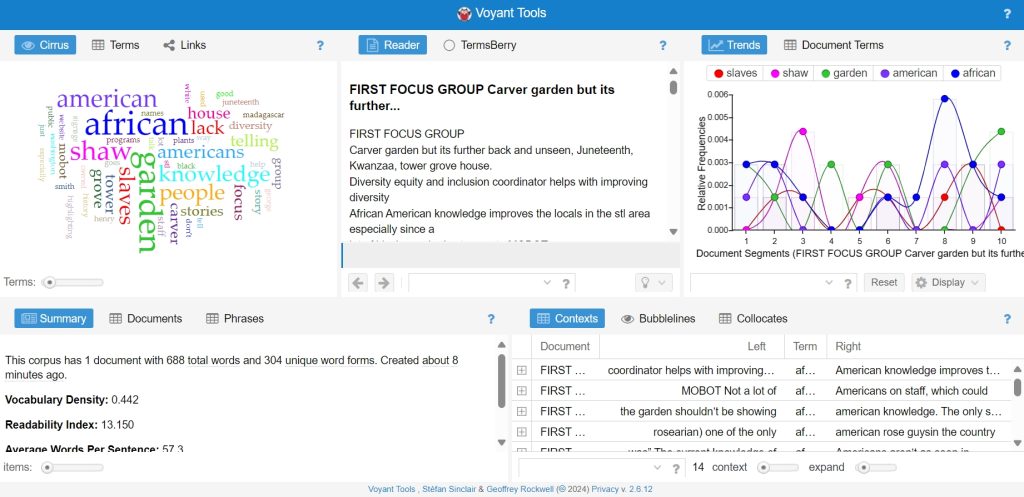
Pictured above is a screenshot from our interaction with the Voyant website. We input our transcripts from our focus groups into the database and it curated numerous forms of data visualization for us. I was most impressed with the word cloud as it concisely organized the key points and words of our goal as researchers.
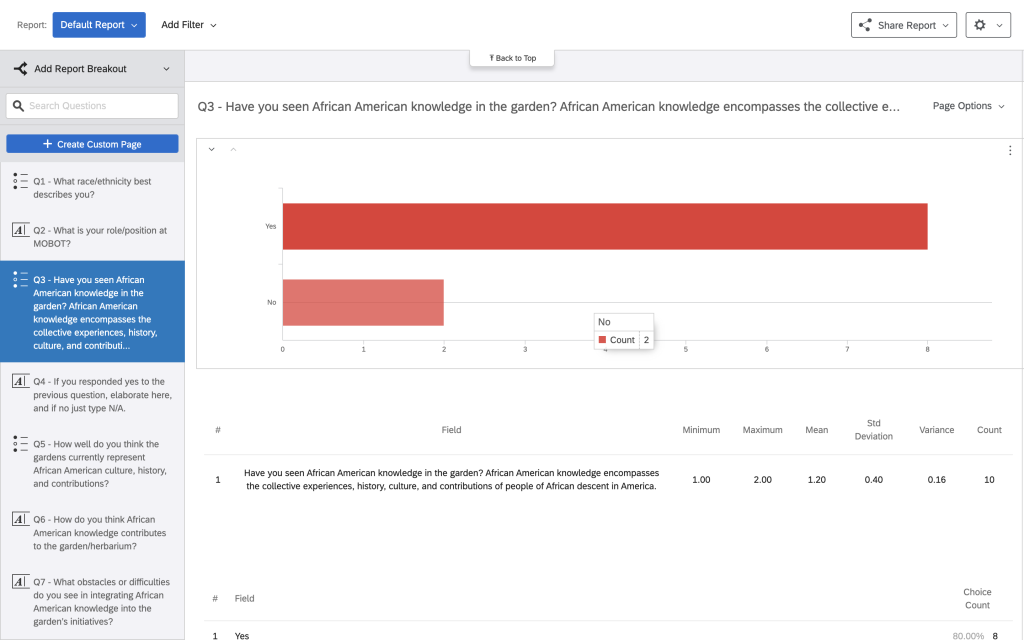
Depicted above is a screenshot of one of our survey questions in Qualtrics. We ask, ” Have you seen African American knowledge in the garden?” We then define what we mean by African American knowledge which encompasses the collective experiences, history, culture, and contributions of African descent in America. At first glance you will see that most people voted yes to this question. But upon further investigation, depsite most people saying yes, they agreed that it isn’t displayed very well or with much integrity. This gave us insight to answer our research question” How can we most effectively and holistically tell the stories of the enslaved people Henry Shaw owned?”
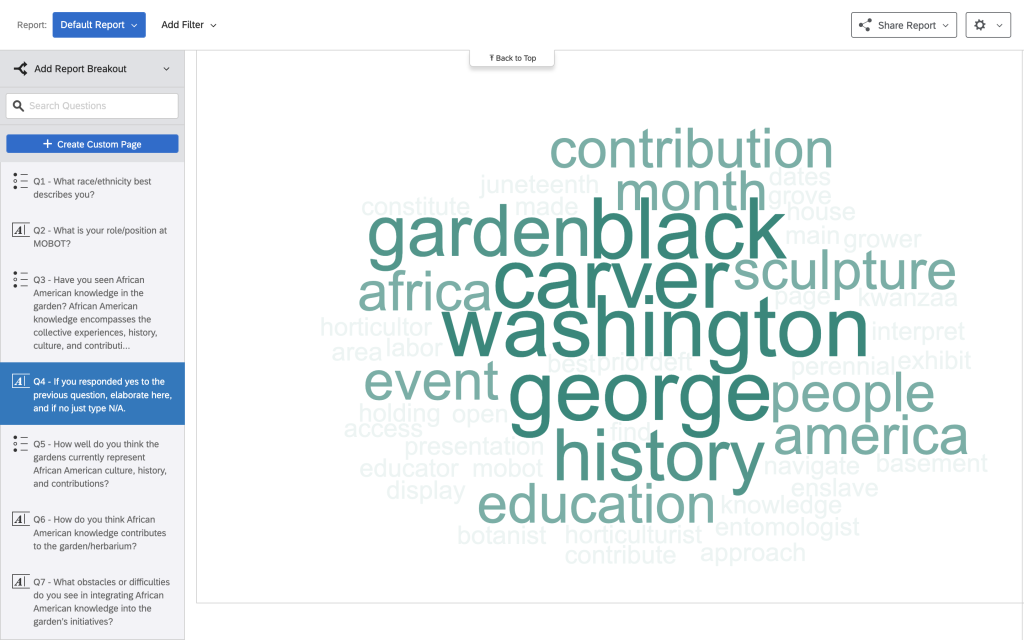

Pictured above is word cloud visualization produced inside of Qualtrics. Qualtrics created this word cloud for a follow up question that we asked after inquiring about seeing African American knowledge displayed in the garden. We asked our participants who answered yes to further elaborate on that answer in the space provided. Our responses varied from “I see contributions by horticultor, growers, and educators. The public sees their contributions, but this access could be much stronger. I thank you for holding this space.” to “I have vaguely seen black history knowledge approached though it seems to be very deftly navigated around.” It seems that most respondents agreed that AA knowledge and contributions are displayed but poorly.
5.a: Defines the scope of research questions effectively and selects information cogently to address them. (25%)
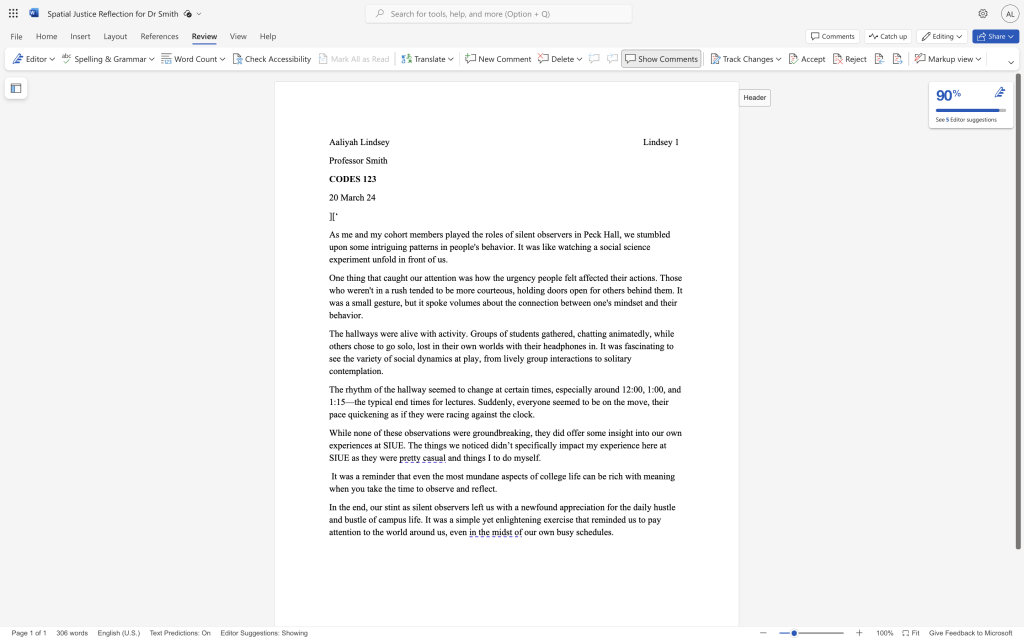
Pictured above is the completion of my spatial justice analysis reflection. Me and my cohort members played the roles of silent observers in Peck Hall to answer this question: ” How does sense of urgency fluctuate depending on the time of day?” Although our findings weren’t unusual, it was neat to see what information you could obtain just by sitting in a space and observing. Even the most mundane aspects of college life can be rich with meaning when you take the time to observe and reflect
.
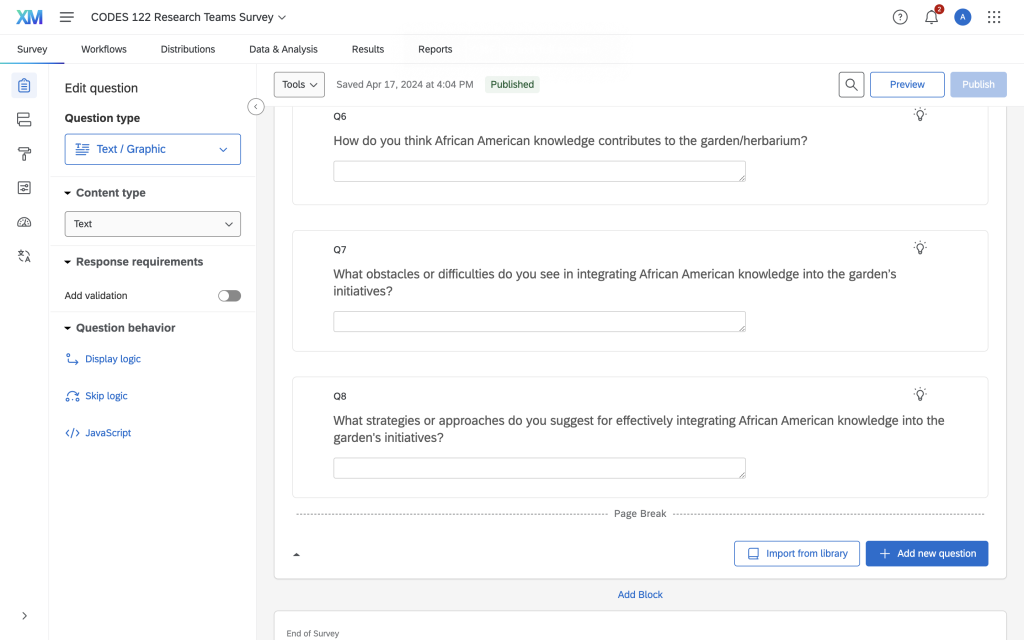
Pictured above is a section of my group’s survey questions. The creation of our surveys was a very iterative process requiring great amounts of patience and meticulous refining. Gathering thoughtful and thorough answers from our survey’s participants proved to be quite challenging but we got it done. The overarching goal of the survey questions was to gain an understanding of how the current employees at MOBOT perceive the lack of African American representation and knowledge within the herbarium. These questions helped us to gain insight into the ” mind of MOBOT”
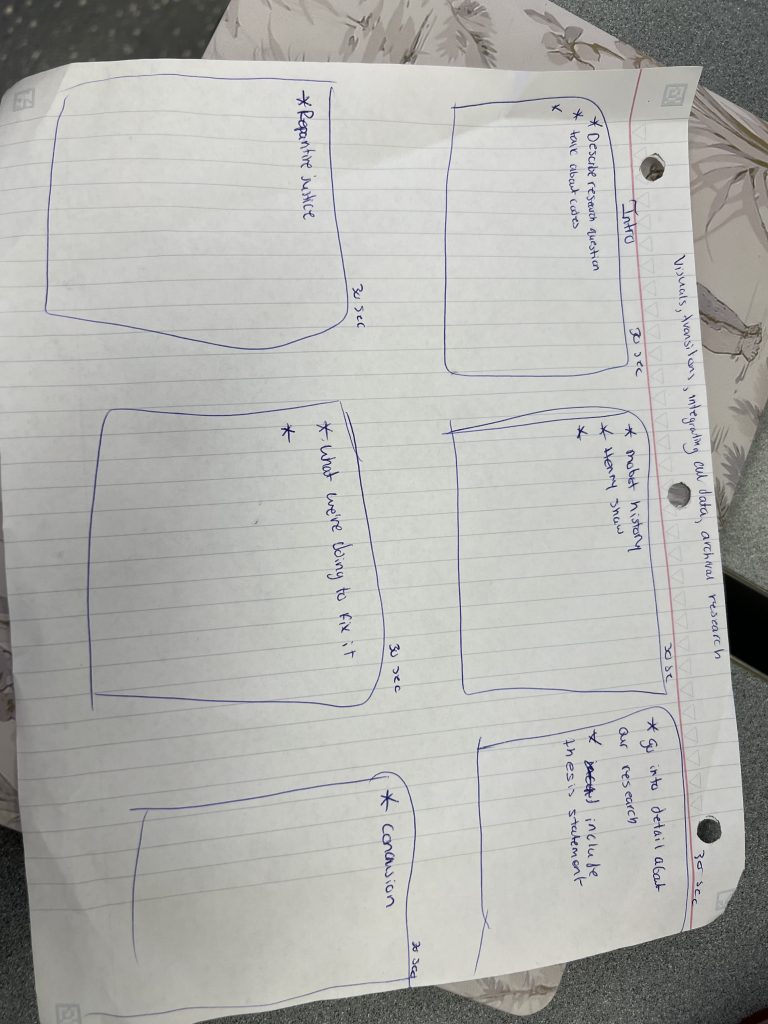
While this image is a bit rough around the edges, it demonstrates the beginning phases of storyboarding for our final project. These 6 boxes led to the synthesizing of an entire works semester which was a highly meticulous process. Each box represents a 30 second chunk of the video containing key points and takeaways.
3.b: Recognizes multilayered ethical issues and the cross-relationships among them.(20%)

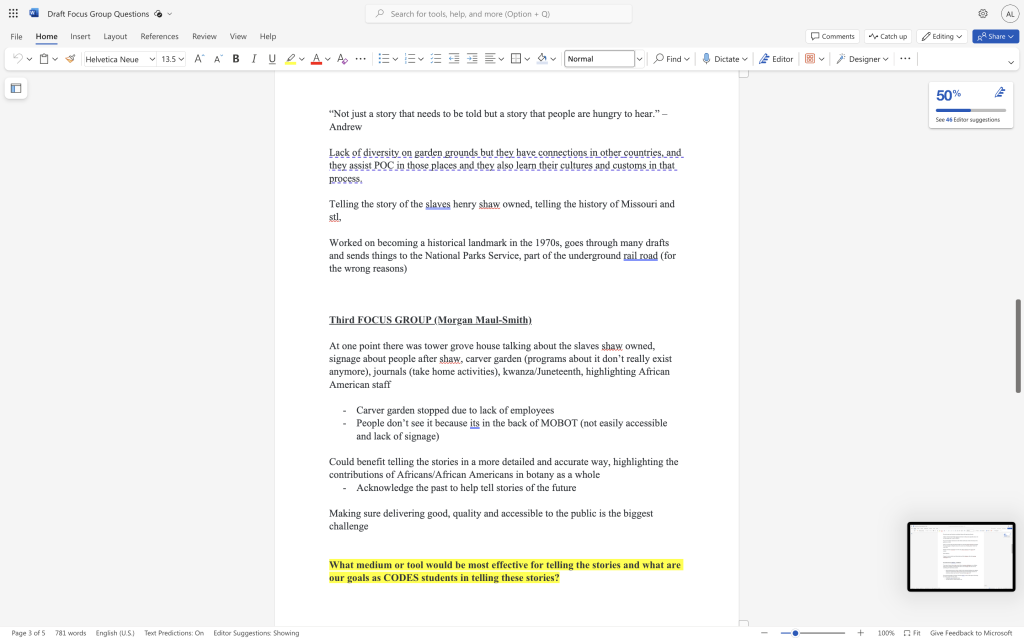
Pictured here is a screenshot from the mixed methods lab as well as a screenshot of the notes we took from our focus groups. In the mixed methods lab, I talk about the second step in the process of collecting our data, focus group interviews. The people we talked to in our allotted time slots provided us with some unique insight and facilitated very thought-provoking conversations. There is a fresher, more intense version of accountability imposed onto the participants in a focus group setting which produced more authentic answers. This allowed us to compare two different methods of data collection specifically noting how much more personal focus groups were opposed to surveys.

Pictured above are notes that I took after reading the assigned article and personally watching the movie about the Central Park 5. I made connections between this case and the work we do in our research teams because The Central Park Five case underscores that telling an accurate story is not just about factual correctness; it is about upholding fairness, integrity, and the pursuit of truth within our legal and societal frameworks. It highlights the necessity of critically examining narratives, challenging biases, and ensuring that justice is not sacrificed at the altar of sensationalism or prejudice. This is similar to what we are trying to do in our research teams while telling the stories of the enslaved people Henry Shaw owned.
11.a: Evaluates texts’ scholarly significance to apply reading to other contexts or issues. (15%)
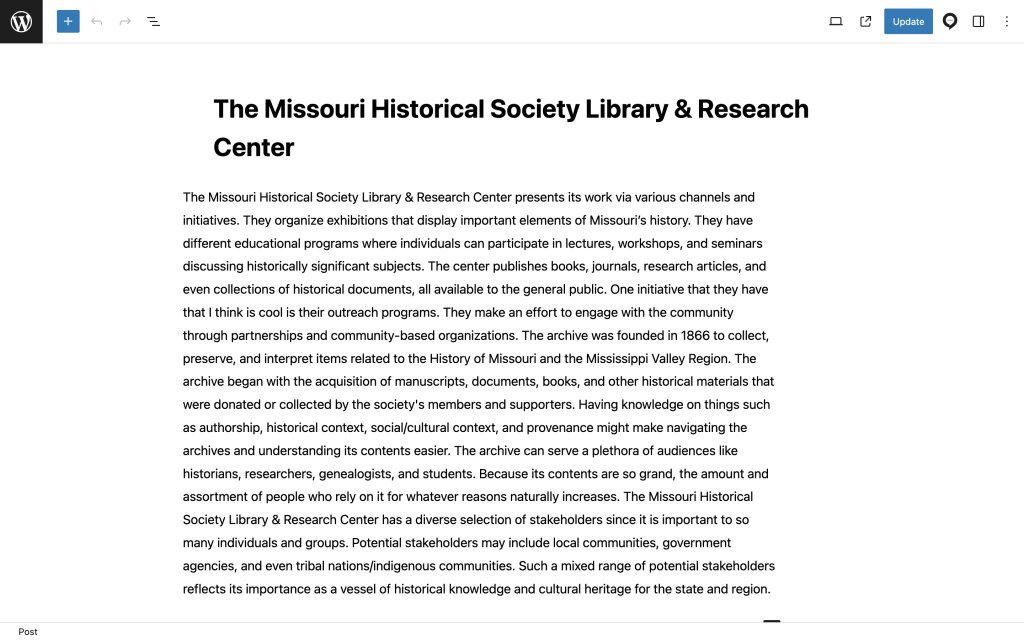
Pictured above is our very first reflection for the CODES 123 course. I discussed information about the Missouri Historical Society Library & Research Center. By analyzing the orgin story of their archive I was able to learn that this Research Center has a diverse selection of stakeholders since it is important to so many individuals and groups. Potential stakeholders included local communities, government agencies, and even tribal nations/indigenous communities. Such a mixed range of potential stakeholders reflects its importance as a vessel of historical knowledge and cultural heritage for the state and region. It also is very similar to MOBOT in these ways.
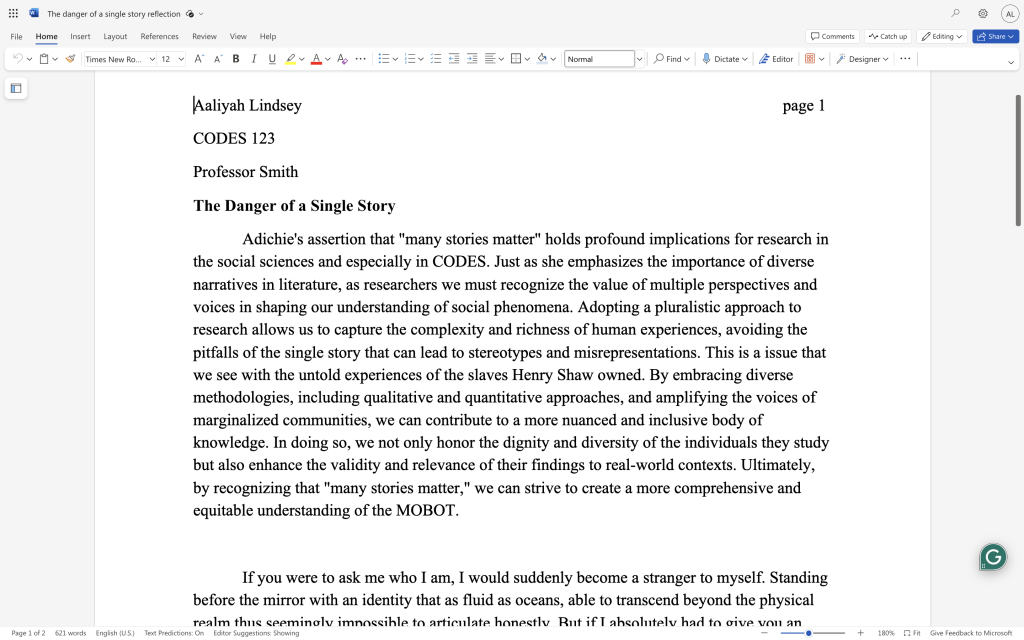
After watching Adichie’s TED talk about the danger of a single story I felt better informed and more firm in the work we were doing in our research teams. It acted as a nice reminder of why the work we do in CODES is so vital. Adopting a pluralistic approach to research allows us to capture the complexity and richness of human experiences, avoiding the pitfalls of the single story that can lead to stereotypes and misrepresentations. This is a issue that we see with the untold experiences of the slaves Henry Shaw owned. By embracing diverse methodologies, including qualitative and quantitative approaches, and amplifying the voices of marginalized communities, we can contribute to a more nuanced and inclusive body of knowledge by recognizing that “many stories matter,” we can strive to create a more comprehensive and equitable understanding of the MOBOT.
13.b: Uses appropriate, relevant, and compelling content to illustrate mastery of the subject, conveying the writer’s understanding, and shaping the whole work. (10%)
The best demonstration of my achievement for this learning goal is our final project video in CODES 122. It synthesizes all that we have learned and presents it in a format that is tech savvy and easy to understand. I did a lot of the video editing and visualization collection here.